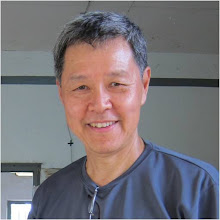 Students are almost always befuddled by the fact that once you go into the clinics, hardly anyone ever refers to this fundamentally important relationship. It seems to be important only at lab benches and do not seem to apply in the clinical context. Part of the reason for this is few drugs exhibit a range of actions that span the entire range of that sigmoidal curve. Many drugs either just operate close to the Emax or are limited in getting close to Emax because of toxicity, or compensatory mechanisms. One other constraint is that the estimates of concentrations are poorly representative of the actual concentrations at the effector site. So often we are reduced to just looking at circulating (fluctuating) plasma concentrations (which are very distant from the effector site) or a very crude estimate of the administered dose.
Students are almost always befuddled by the fact that once you go into the clinics, hardly anyone ever refers to this fundamentally important relationship. It seems to be important only at lab benches and do not seem to apply in the clinical context. Part of the reason for this is few drugs exhibit a range of actions that span the entire range of that sigmoidal curve. Many drugs either just operate close to the Emax or are limited in getting close to Emax because of toxicity, or compensatory mechanisms. One other constraint is that the estimates of concentrations are poorly representative of the actual concentrations at the effector site. So often we are reduced to just looking at circulating (fluctuating) plasma concentrations (which are very distant from the effector site) or a very crude estimate of the administered dose.One other problem is that our ideas of drug response mechanisms are heavily influenced by receptor binding models shaped by earlier studies of G-protein type membrane receptors. The simplistic model assumes easily reversible competitive binding to a receptor with almost immediate effects. More and more drugs nowadays do not operate that way.
Here is a list of the top 50 prescribed drugs (as listed by IMS in 2007).
 Of these only a minority can be regarded as operating according to that model of drug action. If you consider that many clinically useful drugs (antiinfectives, anticancer, etc) work through mechanisms more related to irreversible cell kill type models, I think you can readily appreciate the inadequacy of that simplistic traditional concentration-response model of drug action.
Of these only a minority can be regarded as operating according to that model of drug action. If you consider that many clinically useful drugs (antiinfectives, anticancer, etc) work through mechanisms more related to irreversible cell kill type models, I think you can readily appreciate the inadequacy of that simplistic traditional concentration-response model of drug action.







